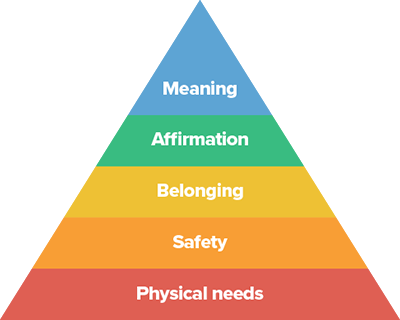One look at Apple’s “spaceship” headquarters or some of Google’s offices are like automatic recruitment material. Then you see articles about some of the great perks and it’s easy to see why they’ve got people clamoring to work there. Who wouldn’t want to work in offices that look like that?
“Stealing another company’s perks doesn’t give you a great culture.” — Piyush Patel
A study by Dr. Fay Cobb Payton at North Carolina State University found perks are a common attractor for Millennials entering the workforce. Running with information like that, it seems like a no-brainer on how to attract top talent.

Perks are a short-term solution
While perks are a great way to catch someone’s eye, they’re not what keeps people around. Another tech giant, IBM, ran the numbers in their study called Myths, Exaggerations and Uncomfortable Truths: The Real Story Behind Millennials in the Workplace. IBM found the top long-term goal for millennials is to make a positive impact on the organization.
It’s not about superficial things like free food or bringing your dog to work.
Perks are a short-term solution. They’re how you get great people in the door, but it’s not how you keep them.
When psychologist Abraham Maslow explained his hierarchy of needs, there was no mention of the workplace. However, as humans, every employee is subjected to the needs explained in Maslow’s hierarchy. We all need something from our jobs.
There are five layers in the hierarchy. The bottom two are physical needs followed by safety and security. At work, you’re providing these layers for your people with a paycheck and job security. Your people can put food on the table, a roof over their heads and they’re not afraid of losing those two things when they come into work tomorrow.
Only after providing these two base layers can you hope to provide the top three layers that I call BAM — belonging, affirmation and meaning.
Belonging: It’s in our nature
Humans are hardwired to belong to groups. It’s natural for us to want to be a part of something greater than ourselves. Since we spend a majority of our time in the workplace, we instinctively want to identify with those around us.
A great way to create a sense of belonging in your company is by giving your people the opportunity for shared experiences. Build rituals for your tribe to help them form positive memories together. Perhaps that’s through a weekly outing to a local pub or an annual retreat. The more shared experiences your tribe can build together, the stronger your tribe’s bond will be with each other.
Affirmation: The right kind of recognition
Everyone likes to receive appreciation. The tricky part is everyone likes to receive it in different ways. Not everyone appreciates being called up in front of the company to receive an award.
One of the best ways to offer affirmation is to start by listening to what your employees have to say. Show them you’re listening by repeating back what you’ve heard. This helps communicate that you were paying attention and not just waiting for your turn to talk. Another approach is to offer specific appreciation about why your employees are doing a great job. Instead of the generic, “Great job today!” try “That was a tough customer, but I appreciate you staying professional.”
The more specific you can get, the more it’ll be obvious that you’re taking the time to see the difference they’re making in the company.
Meaning: What keeps your people long-term
The pinnacle of Maslow’s hierarchy shows your employees they’re not just pushing buttons. Their work has meaning. This is the key driver that makes people get passionate about their work.
One great way to provide meaning is to look for opportunities to clarify the bigger picture. Generic statements of how the company is helping customers can be great for external marketing, but internally you should get more detailed. Like affirmation, the more you can clarify each person or team’s role in the bigger picture the better. Show each person how their work is making a difference.
Encourage your employees to share their own stories. Help everyone throughout your company see how they and their colleagues have made someone’s day better.
Every company gives their employees a basic paycheck, but few go further to truly meet their team’s needs. It’s easy to focus on skills and the concrete methods of bolstering your company’s bottom line. The more you can give your employees what they want, the less it’ll seem like work. When it doesn’t become work anymore, but something they love to do—that’s when they’ll stick around for the long-term.




